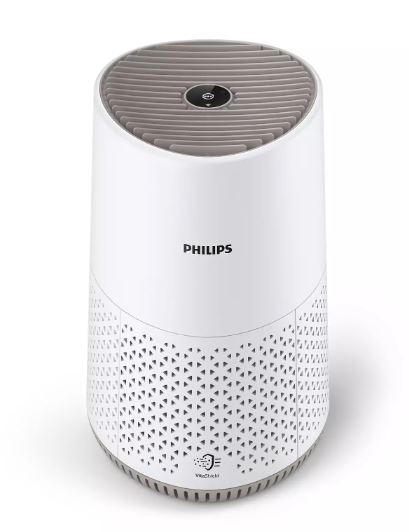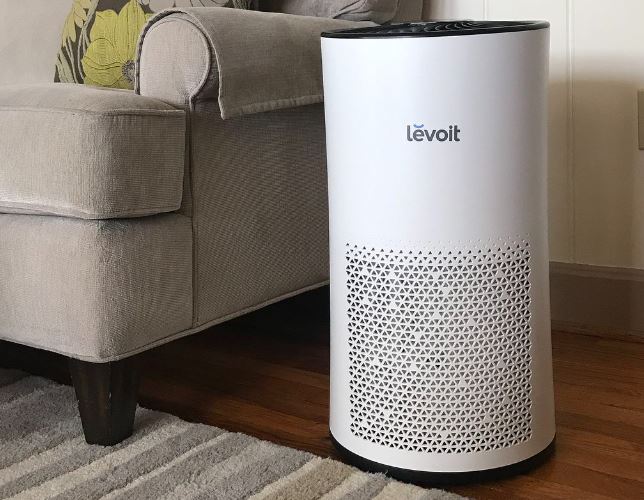In an era of heightened health awareness, the quality of the air we breathe has become a prominent focus for many people. With increasing environmental pollution and a better understanding of the effects of indoor pollutants on our health, it's no surprise that the demand for air purifiers is on the rise.
Air purifiers are appliances that eliminate airborne contaminants in a space, enhancing the air we breathe indoors. They are ideal for individuals suffering from allergies, asthma, and respiratory conditions as they can significantly reduce the amount of allergens, pollutants, and irritants in the air. Even healthy individuals can benefit from air purifiers, as they provide reassurance and safeguard against airborne diseases.
This comprehensive overview will dive deep into the world of air purifiers, examining their advantages, the variety of options on the market, essential factors when selecting the right model, and maximizing your air purifier's potential. By the end, you should have a solid comprehension of air purifiers and be able to decide confidently about whether investing in one is the smart move for your household.

Understanding Air Pollutants and Their Impact on Health
To appreciate the value of air purifiers, it's vital to understand the variety of contaminants they address and the potential consequences of exposure to these contaminants.
Indoor air pollutants can be broadly grouped into three main types:
- Particulate Contaminants: This includes tiny solid and liquid particles present in the air. Examples include pollen, smoke, dust, pet dander, and mold spores, to name a few. Particulate matter can lead to respiratory complications and cause allergic flare-ups.
- VOCs: A Concern for Indoor Air: VOCs are gaseous compounds released from solids and liquids. Sources of VOCs include paints, cleaning products, aerosol sprays, and pesticides. Exposure to VOCs can lead to eye, nose, throat irritation, headaches, and stomach discomfort.
- Understanding Biological Contaminants: These include various microorganisms, including bacteria, viruses, mold, and mildew. They can cause a variety of health problems, from allergy symptoms to more serious health risks.
The impact of these contaminants on human health can differ considerably. For individuals with respiratory conditions or compromised immune systems, exposure to indoor air pollutants can lead to significant health complications. For those in good health, chronic exposure to certain pollutants can impact respiratory health and overall well-being over time.

Unraveling Air Purification Technology
Air purifiers use a combination of physical and chemical processes to effectively eliminate contaminants. Understanding the basic mechanisms employed by purifiers will help you appreciate their effectiveness and the variety of options on the market.
Here are the primary mechanisms and innovations used in air purifiers:
- The Power of Mechanical Filtration: This is the most common method used in air purifiers. It involves using filters to trap particles as air is drawn into the purifier. The filtration media varies, each designed to trap particular particle types. For example:
- Initial Defense: Pre-filters: These are usually the first line of attack, catching larger particles like dust, hair, and similar larger particles.
- HEPA (High-Efficiency Particulate Air) filters: HEPA filters are remarkably proficient at trapping tiny particles, including bacteria, viruses, pollen, and dust mites. To be labeled a genuine HEPA filter, it must effectively capture particles as small as 0.3 microns, with a minimum efficiency of 99.97%.
- carbon filtration: These filters are designed to effectively remove odors, VOCs, and gaseous compounds.
- The Power of Ionization: Ionizers use electrical charges to create ions with a negative charge, which attach themselves to particles in the air. The charged particles then stick to nearby surfaces or are attracted back to the purifier.
- Ozone's Double-Edged Sword: Some air purifiers use ozone as a potent disinfectant to destroy contaminants. While effective, ozone is a respiratory irritant so these types of purifiers should be used with caution and only in unoccupied spaces.
- UV Light: A Radiant Solution: UV light can be used to effectively eliminate bacteria, viruses, and mold. UV light is often used in combination with a filter to trap particles, and UV light provides an extra layer of protection against biological hazards.
Selecting the Perfect Purifier
With a wide array of options available, selecting the ideal air purification system can be a challenging endeavor. It's important to consider several factors to ensure you make the right choice for your particular needs and room size.
Here are some essential factors to weigh:
- Sizing Up the Room: Air purifiers are typically designed for specific areas, so it's important to choose a model that can adequately cater to the room size. Most purifiers will list a suggested room size or CADR rating, which indicates the amount of purified air circulated per minute.
- Understanding Contaminants: Identify the specific pollutants you want to target. If you suffer from allergies, look for a purifier with a HEPA filter. For eliminating odors, consider a model with a activated carbon filter. If you're concerned about bacteria and viruses, a purifier with UV light technology might be best.
- Noise Level: Air purifiers can produce different noise levels, so if you plan to use it in a serene environment, look for models with a low-noise or sleep mode.
- Long-term Considerations: Consider the regular maintenance and associated costs of the purifier. HEPA filters, for example, typically need to be replaced every 6-12 months, depending on use and environmental factors. Include filter replacement costs in your calculations when making your choice.
- Smart Innovations: Many purifiers offer innovative smart capabilities like automatic modes, air quality monitoring, and wireless control, allowing remote control and monitoring. These features can enhance the convenience and effectiveness of your purifier.
Maximizing the Benefits of Your Air Purifier
Once you've chosen and set up your air purifier, there are several things you can do to ensure it operates at maximum efficiency and delivers the maximum benefits:
- Strategic Positioning: Position your purifier in an central location, free from obstacles, to ensure effective airflow. Avoid placing it near open windows or doorways as drafts can impact its efficiency.
- Keep it Running: For the best results, it's recommended to run your purifier continuously. Many models have automatic or low-power settings that adjust the fan speed based on air quality, so you can maintain fresh air without excessive energy costs.
- Regular Filter Care: Regularly adhere to the recommended filter replacement schedule. Over time, filters become clogged with particles, reducing the purifier's efficiency. Set a reminder for filter changes so you don't forget.
- Limiting Indoor Pollutants: Alongside using an air purifier, take steps to minimize indoor air pollutants. This could include vacuuming, dusting, choosing natural cleaning alternatives, and limiting aerosol and chemical products.
Comments on “Fighting Back Against Dust Mites: Air Purifiers for Allergy Relief”